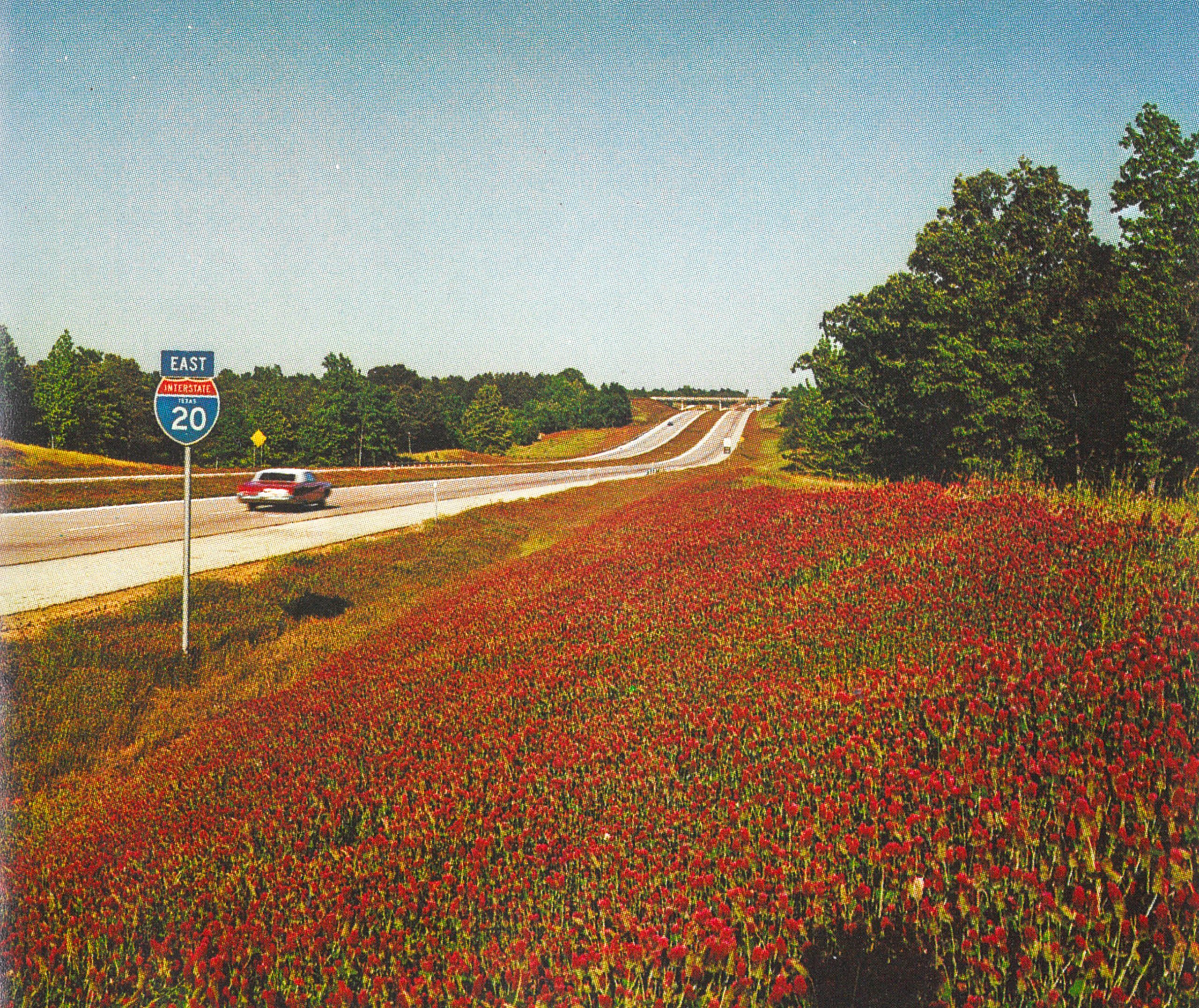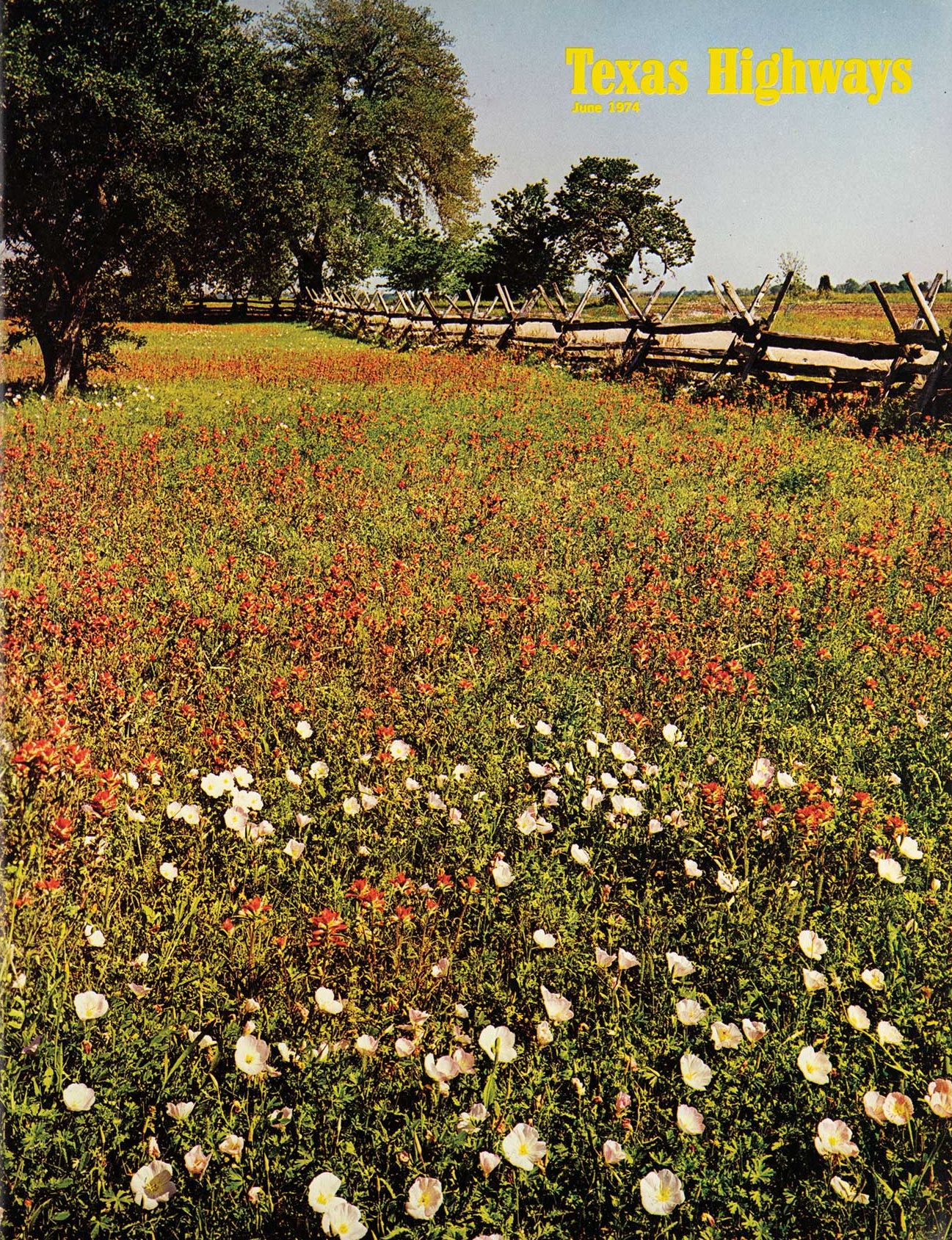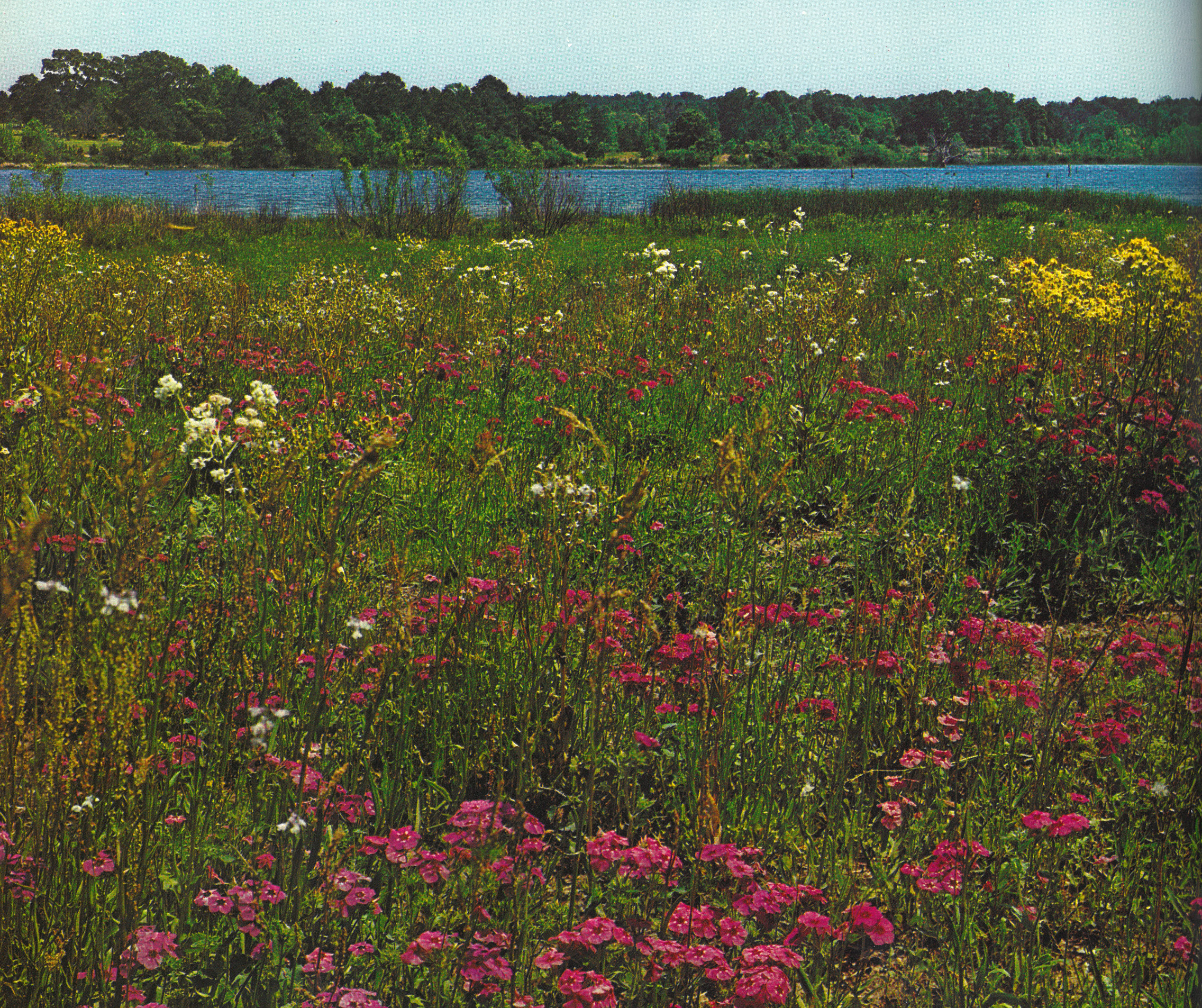
Red clover cultivated by the Highway Department on IH 20 west of Longview.
This article is from the Texas Highways archive. It first appeared in the June 1974 issue. As part of our 50th anniversary celebration, we’re revisiting early stories from the magazine.
Mother Nature was no fool when she signed on the Texas Highway Department 40 years ago to help cultivate the springtime beauties of her roadside showcases.
No sir. Now that the THD has stepped in, the ole gal can just sit back and take it easy. She’s in high clover now … planted by her Highway Department helper, along with about 5,000 other varieties of grasses, shrubs and bright-petalled wild flowers.
The Highway Department has made the difference in the “Land of Contrast’s” floral landscape.
Each spring the Texas countryside is alive with the vibrating hues of buttercups, crimson clover, bluebonnets, Indian paintbrush and other flowers that sprout from seeds cast along highway rights of way by the men of the Highway Department.
Mother Nature couldn’t have done as well on her own.

June 1974 marked the first time wildflowers appeared on Texas Highways’ cover.
Texans owe much of the splendor of spring in their state to a few farsighted highway builders who, more than four decades ago, made sure that the endangered wild flowers of Texas—including the state flower, the bluebonnet—would bloom for the delight of their children and their children’s children. Back in the early 1930’s Gibb Gilchrist, the state highway engineer, directed his engineers and maintenance men throughout the state to beautify the roadsides with native trees, shrubs and wild flowers.
In one directive he told them to take note of any areas adjacent to the highways where there were wild flowers and ” … find the name of the owner of such property … and where possible secure his written permission to gather many of those seeds for replanting on the highway right of way.”
Now, of course, the Texas Highway Department returns the favor. The flowers spread from the rights of way to blanket pasturelands and other areas where encroaching civilization has threatened to rob the land of its beauty.
Botanists have recorded over 5,000 types of wild flowers in Texas, more varieties than any other state. The diversity of Texas’ geography—from the jungle-like forests of rainy East Texas to the mountains and desert country of the west—allows for such abundance. Every bloom from rare insect-eating plants to common pink petalled primroses and bluebonnets, which cover entire fields and hillsides during the spring, can be found in Texas.
Depending upon weather conditions, season of the year and geographic location, almost all of the species can be found along Texas highways. The Highway Department, sometimes dubbed as the nation’s largest “landscape gardener,” cultivates more than 800,000 acres of roadside with flowers, shrubs, trees and grasses.
On new locations barren of plants, the Department seeds lawn-type grasses and wild flowers. Elsewhere, mowing operations are suspended during the primary blooming and seeding seasons. Then, when mowed, part of the seed crop is gathered and scattered in new locations along the right of way. The result is beauty by the mile, a flowery panorama that earns the Highway Department and its employees repeated recognition and returns increasing numbers of tourists to Texas year after year.
Mrs. Lyndon B. Johnson, who when First Lady became known as one of the nation’s most effective promoters of highway beautification, has said that it was the flowers along the roadsides of her home state of Texas that inspired her efforts in this field.
Four years ago, to show her gratitude for this beauty and to recognize the men who are responsible for creating it, she established the Lady Bird Johnson Award for Highway Beautification.
Says Mrs. Johnson, “Today, when it seems we are faced with one environmental crisis after another, it is refreshing to know there are those who are not only concerned, but are doing something to maintain what nature has provided … and also to augment, with plantings of hardy shrubs, indigenous to the character of the land. … These concerned individuals I speak of are the maintenance men of our Texas Highway Department … who, after all, are largely responsible for those ‘picture-postcard’ views we boast about each year.”
Each year with pomp and ceremony, she recognizes the outstanding Highway Department men with cash awards and plaques. A maintenance foreman or maintenance construction supervisor is nominated by administrative officers in each of the Highway Department’s 25 districts. The top officials in the Department then select five or six finalists who are reviewed by a selection committee appointed by Mrs. Johnson. The committee picks the first and second place winners and names the runnersup.
This year’s awards ceremony will be held September 19 amid the impressive setting of the LBJ Library in Austin. Comprising the selection committee this year are Roy White, Austin; Elo Urbanovsky, Lubbock; Glenn Biggs, San Antonio; Mrs. William P. Hobby, Houston and Mrs. Marshall Steves of San Antonio.
As her guests at the programs, held in past years at the lush LBJ State Park that border the Pedernales River near Stonewall, Mrs. Johnson invites administrators and engineers of the Highway Department, other Texans interested in beautification, representatives of the press, and other prominent citizens whom she hopes to enlist in this cause.

Pink phlox and other wild flowers on banks at Lake Hawkins, Wood County.
In 1971 the Department of Transportation showed an interest in the awards ceremonies. Copies of the souvenir program were sent on request to the Scenic Enhancement Division of the DOT in Washington. Copies were then distributed to all Federal Highway Administration district offices as an example of what can be done to promote beautification. As a result, several states have sent representatives to view the roadside beautification programs, tourist bureaus and scenic rest areas of the Highway Department, with possible imitation in mind.
Other Texans whose efforts have been to see that the state maintains its eye-appealing qualities are the concerned citizens who organized the Beautify Texas Council a few years ago. Their goal has been to enhance the attractiveness of the state by marshalling volunteer efforts to attack the growing litter and pollution problems.
During the past six years the Beautify Texas Council has recorded steady growth in membership and program development, until it has become the recognized volunteer agency for leadership, coordination and service to almost all Texans who are working to preserve and enhance our state’s environment.
Its membership is composed of hundreds of individuals and an increasing number of businesses, clubs and associations, plus the direct involvement of state agencies such as the Texas Highway Department, the Agricultural Extension Service and the Department of Community Affairs.
A natural outgrowth of the council’s efforts has been the establishment of the Governor’s Community Achievement Awards competition through which Texas towns and cities enter into annual competition for awards for community involvement programs that have ranged from inner city rejuvenation to city street beautification.
In the few years since this competition has been established, the enthusiasm that now surrounds the program makes it very obvious that the “seeds” of beautification planted by the Texas Highway Department have, indeed, spread over a much broader plain than the highway right of way. Mother Nature never had it so good.








